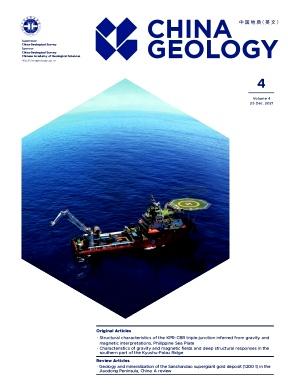Nickel extraction from nickel laterites: Processes, resources, environment and cost
IF 4.7
3区 地球科学
Q1 GEOSCIENCES, MULTIDISCIPLINARY
引用次数: 0
Abstract
With the development of the new energy industry and the depletion of nickel sulfide ore resources, laterite nickel ore has become the main source of primary nickel, and nickel for power batteries has become a new growth point in consumption. This paper systematically summarizes the processes, parameters, products, recovery rates, environmental indicators, costs, advantages, disadvantages and the latest research progress of mainstream nickel extraction processes from laterite nickel ore. It also provides a comparative analysis of the environmental impact and economic efficiency of different nickel extraction processes. It is found that the current nickel extraction processes from laterite nickel ore globally for commercial production mainly include the RKEF process for producing ferronickel and the HPAL process for producing intermediate products. The former accounts for about 80% of laterite nickel ore production. Compared to each other, the investment cost per ton of nickel metal production capacity for the RKEF is about 43000$, with an operational cost of about 16000$ per ton of nickel metal and a total nickel recovery rate of 77%–90%. Its products are mainly used in stainless steels. For the HPAL process, the investment cost per ton of nickel metal production capacity is about 56000$, with an operational cost of about 15000 $ per ton of nickel metal and a total nickel recovery rate of 83%–90%. Its products are mainly used in power batteries. The significant differences between the two lies in energy consumption and carbon emissions, with the RKEF being 2.18 and 2.37 times that of the HPAL, respectively. Although the use of clean energy can greatly reduce the operational cost and environmental impact of RKEF, if RKEF is converted to producing high Ni matte, its economic and environmental performance still cannot match that of the HPAL and oxygen-enriched side-blown processes. Therefore, it can be inferred that with the increasing demand for nickel in power batteries, HPAL and oxygen-enriched side blowing processes will play a greater role in laterite nickel extraction.
红土镍矿提镍:工艺、资源、环境与成本
随着新能源产业的发展和硫化镍矿资源的枯竭,红土镍矿已成为原生镍的主要来源,动力电池用镍成为新的消费增长点。本文系统总结了红土镍矿萃取镍的主流工艺、参数、产品、回收率、环境指标、成本、优缺点及最新研究进展,并对不同工艺的环境影响和经济效益进行了比较分析。研究发现,目前全球范围内用于商业生产的红土镍矿提镍工艺主要包括生产镍铁的RKEF工艺和生产中间产品的HPAL工艺。前者约占红土镍矿产量的80%。相比之下,RKEF每吨镍金属产能的投资成本约为43000美元,每吨镍金属的运营成本约为16000美元,总镍回收率为77%-90%。其产品主要用于不锈钢。对于HPAL工艺,每吨镍金属产能的投资成本约为56000美元,每吨镍金属的运营成本约为15000美元,总镍回收率为83%-90%。其产品主要用于动力电池。两者的显著差异在于能耗和碳排放,RKEF分别是HPAL的2.18倍和2.37倍。虽然使用清洁能源可以大大降低RKEF的运行成本和环境影响,但如果将RKEF转化为生产高镍锍,其经济和环境性能仍无法与HPAL和富氧侧吹工艺相媲美。因此,可以推断,随着动力电池对镍需求的增加,HPAL和富氧侧吹工艺将在红土提镍中发挥更大的作用。
本文章由计算机程序翻译,如有差异,请以英文原文为准。
求助全文
约1分钟内获得全文
求助全文

 求助内容:
求助内容: 应助结果提醒方式:
应助结果提醒方式:


